THE FRAYING PALESTINIAN POLITICAL ENTITY IN THE WEST BANK
by Pinhas Inbari,
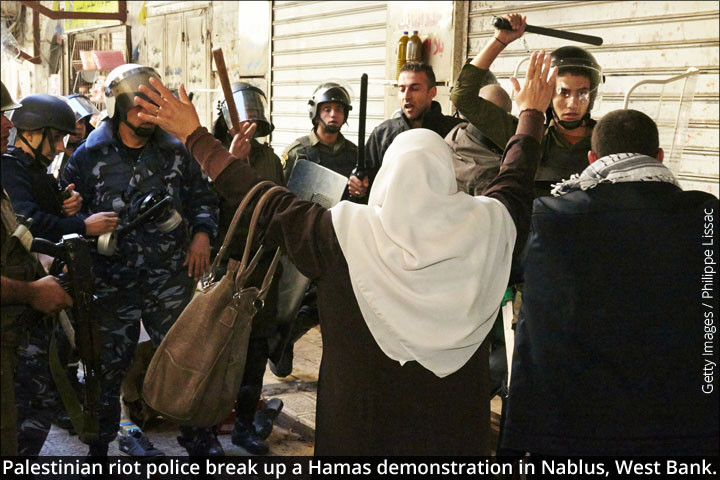
INTRODUCTION
The Palestinian Authority is failing to control extensive parts of the West Bank. As a result, some districts of the West Bank are developing in different directions, thereby accelerating the process of the PA's disintegration.
In Hebron, for instance, the large clans of Mount Hebron have linked up with each other, reestablished the Tribal Council of Mount Hebron, and sent a delegation to Amman to express loyalty to the king of Jordan under the Jordanian flag.
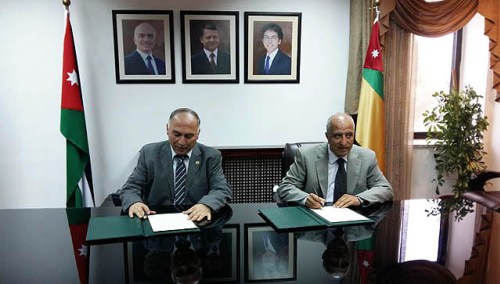
In Ramallah, the PA's de facto seat of government, Europe seeks to organize a phalanx of non-governmental organizations (NGOs) as a political force. This effort is opposed by the PA, which wants the NGOs to be under its own rule. It was because of this pressure that former PA Prime Minister Salam Fayyad resigned from the leadership of the key NGO Palestine of the Future.
Nablus, for its part, has gone into a tailspin of total anarchy. It is under the rule of gangs, with exchanges of gunfire in the heart of the city and attempts at political assassinations.
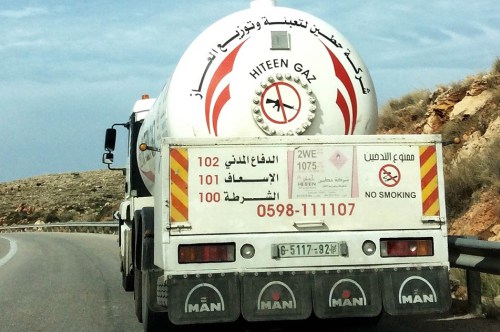
Ramallah's loss of control over the West Bank districts raises questions about its ability to run a state and play its part in ensuring not only Israel's and Jordan's security, as required by various agreements and the rules of conduct between neighboring states, but even its own security.
The tearing of the Palestinian political and social fabric will only increase as Palestinian Authority President Muhammed Abbas nears the end of his tenure.
The fragmented Palestinian West Bank will be a weaker entity than the weak states that collapsed in the Arab Spring. When the Palestinian entity collapses, the vacuum will be filled by the negative forces that have become the nightmare of the world.
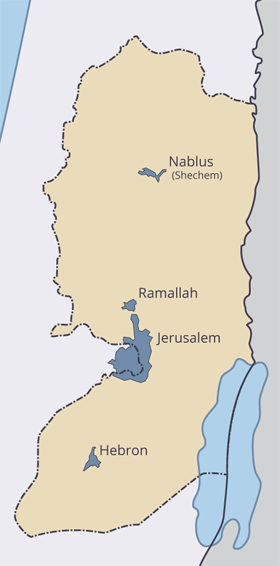
HEBRON — TORN BETWEEN FUNDAMENTALISM, NATIONALISM, AND COMMERCIAL INTERESTS
The most significant recent development in Hebron and Mount Hebron is the revival of an old institution that had been dormant and inactive: the Mount Hebron Tribal Council (Majlis Asha'er Jebel al-Khali).[1] Noteworthy is that its latest conference was held in Amman, Jordan, opened with the Jordanian national anthem, and was adorned with the Jordanian flag. Pictures of Jordan's King Abdullah and the heir to the throne, Crown Prince Hussein, were displayed in the background.
According to sources in Mount Hebron, the person behind the revival of the Tribal Council is a Jordanian senator, Muhammad Khalil Dawaima, whose origins were in the abandoned village of Dawaima.[2] He had circulated in the Mount Hebron area for several months; the person who helped him reestablish the council was Nafez Jabari of Hebron. Earlier this year, Jabari held an event at his home — a warm reception for the senator in which 150 notables of the city and the district took part.
Tellingly, the Jordanian senator came dressed in a cloak that was described as having belonged to Saddam Hussein.[3] This should not be considered a mere anecdote; as we shall see, it sheds further light on developments in Hebron.
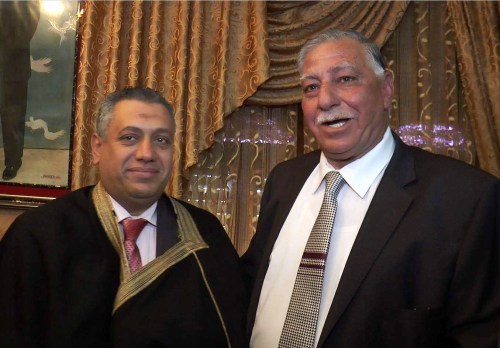
The city of Hebron and the Mount Hebron area display three main characteristics: the clan structure of the society, the adherence to Islam, and the pragmatic inclination of the powerful merchant class, which upholds the economic interests of the city and the district.
Sources in Hebron say it is no coincidence that the Jabari family in Hebron and the Dawaima family in Amman are playing the lead role in what is happening since there is a historical background to this state of affairs.
It goes back to the days of the British Mandate and the War of Independence. In Mandate times the village of Dawaima had a regional market that competed with Hebron's market. The Dawaima market formed the nucleus of the rural Mount Hebron are as an entity not necessarily under Hebron's authority. This market was a necessity because the villagers were then semi-Bedouins and would wander far from Hebron. Between Hebron and Dawaima there was the tension of economic competition.
It is no coincidence that in the new state of affairs, those active within Hebron are the Jabaris, who are the most pro-Jordanian family in the district.
The Jabaris' connection with Jordan began during the 1948 war. When the Egyptian army entered Hebron — to the Hebronites' distress — it was the Jabari family that invited the Jordanian Legion in its stead. Sheikh Muhammad Ali Jabari, the charismatic leader of Mount Hebron, spearheaded the unification of the two banks as part of a famous West Bank delegation that went to Jericho. Afterward, when the young King Hussein was still not old enough to rule, Sheikh Jabari was a member of the Council of Regency until the teenager Hussein reached maturity.
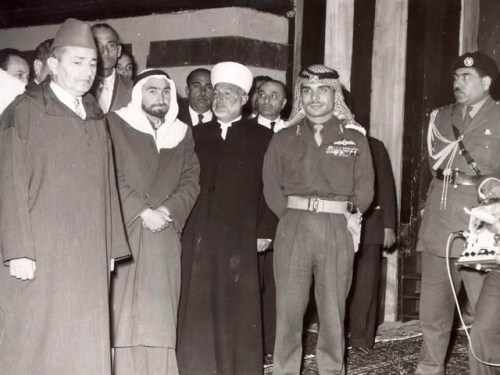
The tie between Dawaima and Jabari, then, is not coincidental. It reflects, rather, the linkage between the rural area and the city under Jordan's patronage — though there are dissenters.
Clan Competition in Hebron
Not all the clans in Hebron are enthusiastic over the connection with Jordan. Naturally, there is competition between clans; the Kawasme tribe, for example, is not avid followers of Jabari.
Sources in Mount Hebron say that because large clans are involved, each with tens of thousands of members, their members are not of one opinion and there are many dissenters. Nevertheless, some basic points can be made. Whereas the Jabari family is essentially pro-Jordanian, the Kawasme family is "Palestinian," meaning that it is inclined to preserve its Palestinian character, particularly in the fashion of Hamas but also that of the Palestinian Authority as well. What is common to all the clans is the economic interest of the city, which overshadows other loyalties and considerations. With the economic factor reigning supreme, the clans do not engage in pointless disputes.
Nevertheless, the Kawasme clan, being more "Palestinian" than others, has nurtured more terrorists than others[5] and has clashed not only with Israel but also with the Palestinian Authority.[6] Members of the Kawasme clan, for instance, were involved in the kidnapping and murder three Israeli teens in 2014.
One also gets the impression, though it is hard to prove statistically, that the name Kawasme pops up more among the PA officials in Ramallah than other names from Hebron.[7]
Because it is the merchant class that lays down the pragmatic line of the city, the institution worth focusing on is the Commerce Bureau. Its website immediately reveals two things. First, while the bureau is indeed within the sphere of the PA, signs of the PA are sparse; it is hard to find the Palestinian flag.[8] Second, the bureau engages in considerable independent activity, local and international, without connection to the PA.[9]
A look at the political side of the bureau indicates that its leadership elections were a sham. The families of Hebron chose its leadership among themselves, thereby averting the tension involved in elections[10] and in effect prevented foreign elements from influencing the nature of the bureau, including the PA in Ramallah. In an interview, the head of the Commerce Bureau, Muhammad Gazi Hirbawi, stressed its role in ensuring the city's security,[11] a role that is supposed to be reserved for the PA. The Mayor of Hebron, Daoud Zatari, who is considered close to PA President Mahmoud Abbas, also mentioned security as part of the municipality's responsibility.[12]
Opposite the Hebron Commerce Bureau is the office of the PA-affiliated governor, Kamel Hmeid. Known as a Bethlehem-based figure during the second intifada under Arafat, he lives in Bethlehem to this day. The governor sports many flags of Palestine.[13] A look at his Facebook page shows that he encouraged the "knife intifada."[14] Thus, while not a Hebronite, he reinforces Fatah elements in the city.
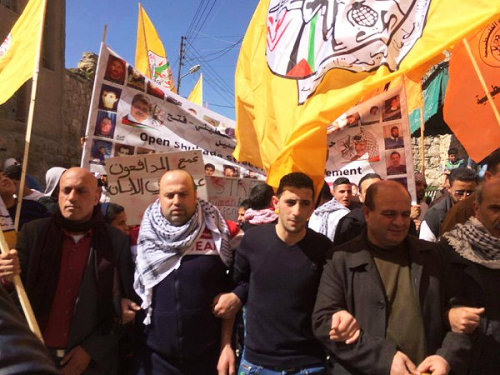
As for the Fatah movement, it turns out that it cannot muster mass rallies even though it holds the governor's office.[15] The simple reason is that the large clans, with their power and their Islamic nature, do not encourage the kind of large-scale disorderly events that are typical of Fatah's activity.
Among the villages in the district, Sei'r is considered a "Fatah village."[16] It is the village of Abbas Zaki; a member of the Fatah Central Committee and one of the more extreme Fatah figures — he calls for forging ties with Iran. Indeed, the highest number of knife attackers who met their deaths came from Sei'r.[17]
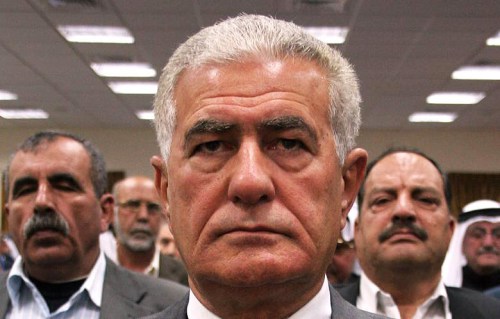
However, it turns out that this "Fatah village," too, has given priority to the pragmatic interests of Mount Hebron over the "spirit" of the "Fatah struggle." When the militant governor of Hebron, Kamel Hmeid, came to the village to praise it for its "sacrifice," he was surprised to find that the village notables had summoned him to a discussion behind closed doors in which they demanded that he stop sending the youths of the village to their deaths. Indeed, since then, the village of Sei'r has ceased to dispatch knife attackers.
Moreover, whereas the Islamic movements, Hamas and Hizb ut-Tahrir (the Islamic Liberation Party), generally display ideological coherence, the major Fatah figures hold diametrically opposed opinions.
Three main individuals represent Fatah in Mount Hebron. One is Abbas Zaki of Sei'r; the others are Jibril Rajoub and Nabil Amro of the village of Dura. All three, however, have relocated their activities to Ramallah. For one thing, they see themselves as qualified to compete for the leadership of the PA as a whole, not just for that of Mount Hebron. For another, the formation of the Tribal Council poses an ideological challenge to their ambitions, and in the struggle over the leadership of Hebron itself, where Fatah was once supreme, there is now a vacuum; the center of gravity of the Hebron leadership has shifted to Ramallah. The Mount Hebron Tribal Council filled the power void.
Jibril Rajoub and Abbas Zaki, despite having moved their operations to Ramallah, have not forgotten their origins. Rajoub, for example, as head of the Palestinian Football Association, has built the Palestinians' main soccer stadium in Dura, and sources in Mount Hebron say Zaki arranges jobs in the PA for young people from Sei'r.
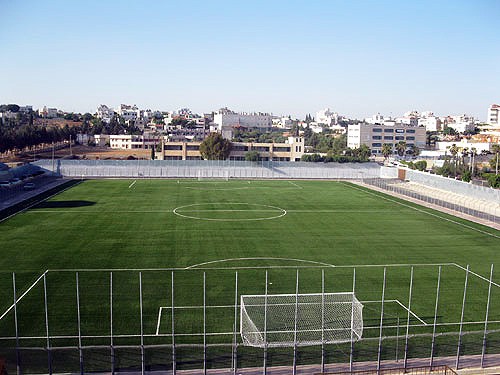
From an ideological standpoint, however, there are clear, essential differences between Nabil Amro, who was editor of Fatah's Ramallah-based mouthpiece Al-Hayat al-Jadida, and Abbas Zaki. Whereas Zaki is a radical Palestinian nationalist who calls for ties with Iran, Amro, in his recent statements, relates more to the collapse of Sykes-Picot, and appears to have reconciled himself to the loss of the idea of the Palestinian state in the changing Middle East.
The Islamists Can Pull Out the Masses
Nevertheless, the Islamic parties set the tone in Hebron, and it is Hizb ut-Tahrir that succeeds to muster the largest rallies.[18] In the past, the party organized violent clashes with the PA which resulted in deaths and injuries.[19] Apparently, to avoid clashes, the clans of Hebron have subdued Hizb ut-Tahrir. It continues, though, to hold large — though quiet — gatherings, and the Hebron institutions do not interfere with these so long as they do not cause the sort of economic damage that mor e fiery rallies typically entail.[20]
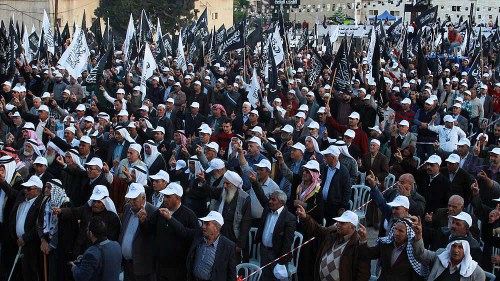
In one case, the Commerce Bureau — whose composition, as observed earlier, is determined by the large clans — undermined a stance that Hizb ut-Tahrir had taken. The Islamic party has a worldwide reach, and it has clashed with Russia within Russia itself and also, of course, in Syria.[21] After Hizb ut-Tahrir organized a demonstration against Russia in Hebron,[22] the Commerce Bureau still invited a Russian delegation for an official visit.[23]
As for Hamas, because of its terror activity,[24] there is security cooperation with Israel to containing it. Moreover, Hamas is unable to compete for popularity with Hizb ut-Tahrir.
Hamas has another problem: the division between the worldwide Muslim Brotherhood movement and Hamas in Gaza. The person most representative of Hamas is Dr. Aziz Dweik, who was head of the Palestinian Legislative Council.[25] According to the Palestinian Basic Laws — which, of course, will not be upheld — Dweik is supposed to succeed Abbas if he resigns or falls ill. But Dweik is not really a clear-cut Hamas representative; he is more affiliated with the Muslim Brotherhood.[26]
According to Palestinian security officials, when Ahmed Jabari was commander of the Al-Qassam Brigades in Gaza, he tried infiltrate Hamas terrorists into Mount Hebron to bolster the military wing.[27] At the same time Dweik relocated to Nablus[28], and today he is mainly active in the northern city. Are these matters connected? Is the Hamas military wing in Gaza threatening Muslim Brotherhood political figures in Hebron? It cannot be said for certain.
Yet, in an effort to maintain its political appeal in the city, Hamas has surprisingly issued words of praise for the man who organized the Mount Hebron Tribal Council, the Jordanian Senator Dawaima.[29] Hebron sources say the senator is believed to have connections with Hamas in Gaza, is involved in efforts to remove the blockade from Gaza, and that Hamas appreciates him for it. Will Hamas try to infiltrate the Tribal Council? Will it make use of the Islamic winds that are blowing in Mount Hebron to bend this body to its own purposes? It is a possibility that bears watching.
The Cloaked Jordanian Factor
Hamas and the Tribal Council may have a common denominator. It is suggested by the senator wearing at the event in Hebron a robe identified with Saddam Hussein. It was not only Saddam's popularity among the Palestinians that played a role here; the senator's attire also revealed one of Jordan's major considerations in latently supporting this process.[30]
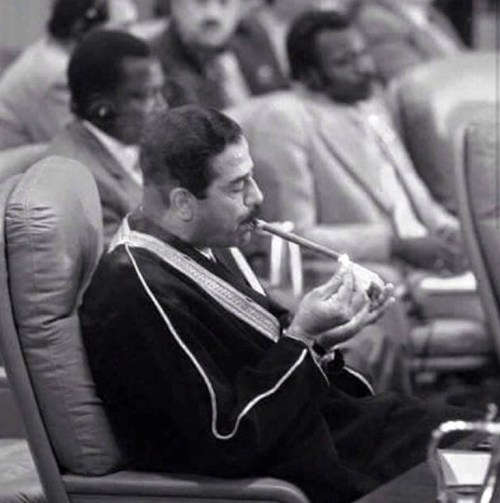
The Arab storm left Jordan with threats along its borders. In Syria to the north, both Assad and his enemies are enemies of Jordan; in Iraq to the east, the pro-Iranian Shiites are getting a dramatic boost; and to the south, the Salafi mood of the Bedouin tribes in Saudi Arabia has been permeating the Jordanian Bedouin tribes. Jordan cannot permit a hostile entity to develop on its western border as well. The expulsion of the Jordanian dignitaries from the Temple Mount has shown Jordan that this is indeed what can happen. Hence, it has begun to organize its friends on the West Bank with the aim of ensuring a friendly Palestinian neighbor.
In private conversations between the author and Jordanian sources, it was clear that officially Jordan did not want to renew ties with the Palestinians on the West Bank. It is important to maintain the internal balances within Jordan, but they confirmed that Muhammad Khalil Dawaima's initiative was not opposed.
A Saddam Hussein robe is a message aimed at Iraq. The heads of Saddam's army are known to form the backbone of the Islamic State, and Jordan may be trying to fortify its borders on the Iraqi and Syrian sides with the help of its old friends from that army.
* * *
Notes
1 https://www.facebook.com/3shaer.gabl.alkhlil/videos/1100545140001649/https://www.facebook.com/3shaer.gabl.alkhlil/videos
This was not the only event linking Hebron to both banks of the
Jordan; another, for example, was the participation of former
Jordanian Prime Minister Maruf al-Bakhit in a Hebronite event in
Amman.
http://www.raialyoum.com/?p=449833
2 https://www.facebook.com/0nana1700/posts/733080723407915
According to the Tribal Council's Facebook page, as well as a listing of those who are behind the initiative.
3 https://www.facebook.com/Dr.Moh.asha/photos/pcb.1156727024345692/1156726097679118/?type=3&theater
4 Hebron University, https://www.google.com/search?hl=en&q=%D8%A7%D9%84%D8%B4%D9%8A%D8%AE+%D9%85%D8%AD%D9%85%D8%AF+%D8%B9%D9%84%D9%8A+%D8%A7%D9%84%D8%AC%D8%B9%D8%A8%D8%B1%D9%8A&tbm=isch&imgil=18cgp1O1o2oGvM%253A%253BPluhtOsOJ35SnM%253Bhttp%25253A%25252F%25252Fwww.hebron.edu%25252Findex.php%25252Far%25252Ffounder-2&source=iu&pf=m&tbs=simg:CAESzQEJ18cgp1O1o2oawQELEKjU2AQaBAgDCEIMCxCwjKcIGmIKYAgDEii6GaAFuRC6EPkE3g63EKEF4A65GcY6qC6kLqcuxTrjOa0voy6lLqIuGjBcfyY6Yw_1pxcrP40mzj0_1vxMYSmaUL75DtjxndsOZaQkHmduYsxpQDZakTZ3jWuzcgAwwLEI6u_1ggaCgoICAESBEnhNOUMCxCd7cEJGi0KDAoKcGhvdG9ncmFwaAoKCghzdGFuZGluZwoHCgVzdGFmZgoICgZmYW1pbHkM&fir=18cgp1O1o2oGvM%253A%252CPluhtOsOJ35SnM%252C_&usg=__fvsO2ySUN0xsXzgfxUhniFhhvLQ%3D&biw=1280&bih=662&ved=0ahUKEwiBsfLg153OAhWE2BoKHcR9A7UQyjcIRw&ei=pOydV4HPDISxa8T7jagL#imgrc=18cgp1O1o2oGvM%3A
5 http://www.israelhayom.co.il/article/196267
6 http://www.fj-p.com/Party_InPress_Details.aspx?News_ID=95633
7 See, below, the chapter on the civil society in Ramallah.
8 http://www.hebroncci.org/ar/
9 http://www.hebroncci.org/ar/index.php?option=com_content&view=article&id=1638&Itemid=89
10 http://hebron-times.com/ViewDetails.php?PID=1761 Interview given by the head of the Commerce Bureau, Muhammad Gazi Hirbawi, to the Hebron website.
11 http://www.panet.co.il/article/1207366
12 https://www.youtube.com/watch?v=LB6u-eBYoEU
13 http://www.hebron.plo.ps/index.htmlhttp://www.hebron.plo.ps/article-13.html
14 https://www.youtube.com/watch?v=0_0uy1ftOqQ
15 Al Watan http://www.alwatanvoice.com/arabic/content/print/669698.htm
A rally in Hebron to open a barricaded road. The above photo shows Fatah trying to recruit large gatherings — an attempt that ultimately did not succeed.
16 https://www.facebook.com/seiir/
17 https://www.facebook.com/BETNA.S3ER/
18 http://www.pal-tahrir.info/memorial93/7263-2014-05-28-16-19-26.html
19 https://www.youtube.com/watch?v=MCC3z23THR0https://www.google.co.il/url?sa=t&rct=j&q=&esrc=s&source=web&cd=3&cad=rja&uact=8&ved=0ahUKEwj02uKVk4vNAhVFSRoKHfkuCaUQFggmMAI&url=http%3A%2F%2Fwww.saowt.com%2Fforum%2Fshowthread.php%3Ft%3D25362%26page%3D4&usg=AFQjCNHAO5BFHfJB9kAMrlHdFIQB9xf7Ww&sig2=x0OH3gAAA2bjEWsNg4o5ug&bvm=bv.123664746,d.d2s
20 https://www.youtube.com/watch?v=l3i3xMs7GpM
21 http://tahrir-syria.info/activities-and-events-2/activities-syria/demonstrations/3061-%D9%85%D8%B8%D8%A7%D9%87%D8%B1%D8%A9-%D8%AD%D8%B2%D8%A8-%D8%A7%D9%84%D8%AA%D8%AD%D8%B1%D9%8A%D8%B1-%D9%81%D9%8A-%D8%A8%D9%84%D8%AF%D8%A9-%D8%A7%D9%84%D8%AF%D8%A7%D9%86%D8%A7.html
22 https://www.youtube.com/watch?v=T9RSouVnZsg
23 http://www.wafa.ps/ar_page.aspx?id=TCeT0Ka682295545899aTCeT0K
24 On the depth of Hamas' involvement in the terror originating from Hebron, see the website of the Israel Security Agency (Shabak):
https://www.shabak.gov.il/publications/publications/Pages/shotef040313.aspx
25 https://ar.wikipedia.org/wiki/????_??????
26 https://ar.wikipedia.org/wiki/????_??????
27 In a private conversation.
28 https://ar.wikipedia.org/wiki/%D8%B9%D8%B2%D9%8A%D8%B2_%D8%A7%D9%84%D8%AF%D9%88%D9%8A%D9%83
29 http://www.alwatanvoice.com/arabic/news/2016/06/01/927918.html
30 In private conversations between the author and Jordanian sources, it was clear that officially Jordan did not want to renew ties with the Palestinians on the West Bank. It is important to maintain the internal balances within Jordan, but they confirmed that Muhammad Khalil Dawaima's initiative was not opposed.
RAMALLAH AND THE PALESTINIAN NON-GOVERNMENT ORGANIZATIONS (PNGOS)
In Hebron the large clans and the merchant class look out for the local interests. In Ramallah, the PLO top brass sits in the governmental compound, the Muqata, and keeps disorderly demonstrations out of the city center, deflecting them to the security fence or to points of friction with Israel.
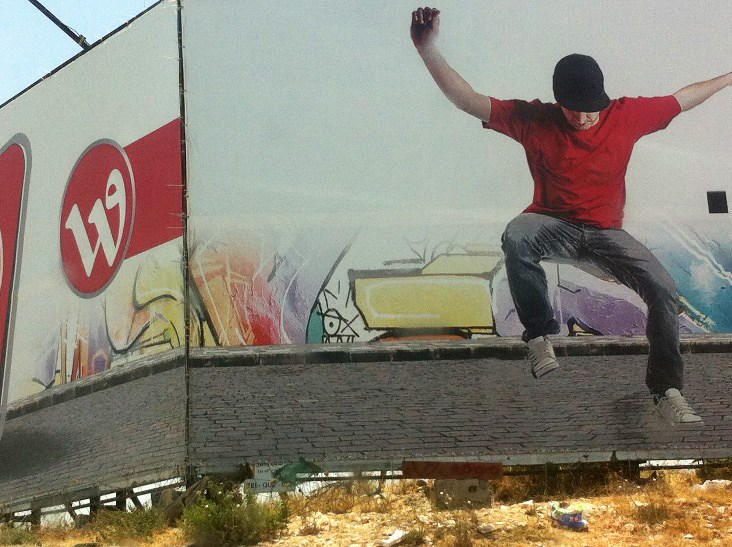
Ramallah in statistics
Population: (including al-Bireh) 357,968
Size: 19 km2
Am'ari refugee camp
Population: 6,100
Size: 0.096 km2
Leaders: Mahmoud Abbas, head of the PA; Musa Hadid, Mayor
But the Muqata, the stronghold of the "Tunisians," the Palestinian Authority (PA) leadership that signed the Oslo agreements in the 1990s and took power, now faces the growing opposition of the "locals." That term refers to the Fatah circles of the West Bank and particularly Fatah's armed wing, Tanzim,[1] along with a dense network of Palestinian nongovernmental organizations (PNGOs) that relies on European aid.[2] Whereas the array of clans in Hebron stands on its own two feet, the PNGO network could not exist without Europe.[3] Because Europe refuses to finance the Tanzim, elements of the Tanzim have blended into the PNGO network.[4]
These organizations are mainly staffed by academics,[5] and unlike the Mount Hebron clans, which are guided by pragmatic considerations, the academics of Ramallah are steered by abstract ideas rather than concrete concerns. They have no commercial interests to protect.
And whereas the Mount Hebron clans' focus is on Hebron, the Ramallah PNGO network is not "local." Its concern is not Ramallah but "Palestine" as a whole, and it sees all of Palestine as its field of activity.
Europe's massive support for this network reflects its fealty to the notion of Palestine, all of it, as a state in the making. Hence Europe opposes the disintegration of the PA's authority — a phenomenon now evident in Hebron.
The First Intifada, or "intifada of stones and banners," which erupted in 1987, may have begun in spontaneous fashion. It was, however, the Ramallah- and east Jerusalem-based PNGOs[6] that quickly took the helm, instructing the activists in Gaza and the rest of the West Bank on how to wage the struggle without resorting to terror.
Back then, and today as well, the backbone of the PNGOs is the Palestinian leftist organizations — the Popular Front, the Democratic Front, and the former Communist People's Party. Indeed, the proportion of Fatah members in these PNGOs is estimated at more than half.[7] The proportion of members of the leftist organizations is, however, higher than the proportion of the general population they claim to represent, and it is their activity in these frameworks that to a very great extent keeps them in existence.
In terms of their political agenda, these organizations are very anti-Israeli, and the way in which they conducted the First Intifada constitutes their battle experience.
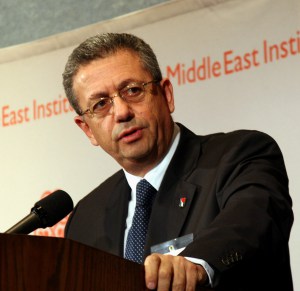
Two of these PNGOs' prominent figures — Mustafa Barghouti, head of the Palestinian National Initiative and the Palestinian Medical Relief Committees, and PA Foreign Minister Riyad al-Maliki — are also among the most harshly anti-Israeli figures. Barghouti makes use of atrocity propaganda about Israel, and Maliki, as foreign minister, wages the diplomatic battle against Israel behind the scenes. Both of them came from the radical anti-Israeli left — Maliki from the Popular Front, which he represented at the headquarters of the First Intifada in Orient House, and Barghouti from the Palestinian Communist Party. Both are also active in the BDS campaign against Israel.
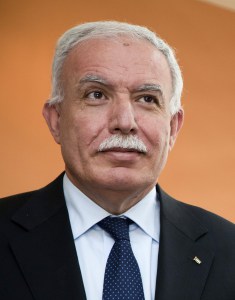
Europe provides this aid because it believes that from this network the successor to Mahmoud Abbas will emerge — that is, from the "civil society" of local Palestinians that the Oslo agreements disinherited, instead bringing the PLO from Tunis to rule over them.
Because Ramallah represents the "Palestinian idea" pertaining to all of Palestine, the Fatah leaders in Hebron who harbored ambitions about succeeding Abbas have left Hebron for Ramallah. They include figures such as Jibril Rajoub, Abbas Zaki, and Nabil Amro.
Israel does not have much to expect from this civil-society leadership. It turns out, however, that a real fight against the PA is now being waged out of public view. Europe's support for the PNGOs against the Muqata is not welcomed by PLO-Tunis, which believes Europe has already decided to seek a successor to Abbas — not from among the "Tunisians" but from among the locals and within Ramallah in particular.
Indeed, the dispute between PLO-Tunis, on the one hand, and the Tanzim and the civil society, on the other, is of long standing and did not emerge just lately. Already in the First Intifada, the PNGOs took the lead from the PLO and waged a civilian struggle without terror. The PLO, for its part, made a redoubled effort to divert the civilian struggle into terror, and in the Second Intifada it succeeded in doing so completely after removing the domestic civil-society activists from leadership positions.
The current "knife Intifada" marks for the most part, a return to the First Intifada tactics, now that Abbas had adopted its methods and harnessed them to the diplomatic effort to achieve statehood.
Yet, even if the PLO was prepared to adopt the methods of the First Intifada, it is not prepared to agree to any power sharing with the PNGOS. On the contrary, it wants to take measures against them and, hence, is encountering problems with Europe.
Toward the end of March 2016, with European encouragement behind the scenes, a large conference of PNGOs was held in Ramallah. Two representatives of the PA were invited: Nasser Qatami, director-general of the Ministry of Labor, and Sultan Abu al-Einein, who advises Abbas on PNGO affairs.[8] According to sources in PNGOs that participated in the closed conference (I have a protocol but my sources forbade me to quote from it), the PA official said the PA was considering the passing of laws that would restrict the PNGOs' activity. This was for several reasons: the PNGOs constitute a parallel government to the PA, do work that the PA is supposed to do, provide work under better conditions than the PA, and the PNGO network organizes public activities against the PA, such as the teachers' demonstration and the opposition to the new national insurance law.
Former Prime Minister Salam Fayyad is not a product of the PNGOs, and he had previously worked at the World Bank. His government, however, was made up of PNGO members, and his special adviser Jamal Zakout, who came from the Democratic Front, was one of the main organizers of the First Intifada along with Maliki; both were active in the joint headquarters of the intifada. Salam Fayyad differs from Mustafa Barghouti[9] in that he voices proud Palestinian positions but not virulently anti-Israeli attitudes.
That was one of the main reasons Fatah-Tunis was so resolute in its opposition to the Fayyad government, until it brought about his ouster.
After Fayyad resigned, he joined the PNGO family by founding a PNGO called Palestine of Tomorrow. The PA, however, immediately intervened, closed it down and expropriated all its funds on a pretext of "corruption." Europe then stepped in,[10] forcing the PA to approve the PNGO's activity and return the money to it. This PNGO's activity indicates that, within its framework, Fayyad is continuing the economic development of the PA that he pursued as prime minister.[11]
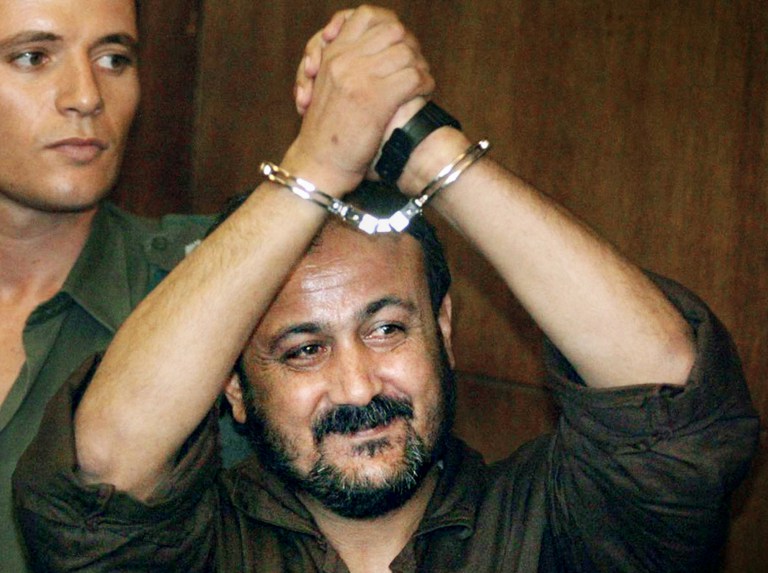
According to sources in Ramallah, Palestine of Tomorrow evidences the link between the PNGOs and the Tanzim; in other words, the local leadership is consolidating itself against the "Tunisians." These sources say that Qassam Barghouti, son of jailed Tanzim founder Marwan Barghouti, is active in the organization, and that Marwan's wife Fadwa is often seen in its corridors. In the PNGO's mission statement, Fayyad called to change "'steadfastness' [tzumud] from a mere slogan to a real plan of action."
* * *
Notes
1 For example, an interview with Marwan Barghouti questions the legitimacy of Mahmoud Abbas' rule:http://www.alarab.co.uk/?id=37352
2 For a site that details the Palestinian NGO network and the connection with European aid, see:http://www.pngo.net
3 According to a report by the Rosa Luxemburg Foundation, 80 percent of the PNGOs' funding comes from Europe.
https://www.rosalux.de/fileadmin/ab_palestine/pdf/RLF_newsletters_EN/RLF_PAL_Gerster_PNGOs.pdf
4 Ibid. According to this report a bit more than half of the PNGOS are affiliated with Fatah, the rest with leftist organizations — well above their proportion of the population. In the Legislative Council elections these groups received very small percentages of the vote.
5 https://www.google.co.il/url?sa=t&rct=j&q=&esrc=s&source=web&cd=3&cad=rja&uact=8&ved=0ahUKEwjZiNXHlJ_NAhVJuhoKHYoWDw0QFggrMAI&url=https%3A%2F%2Fwww.facebook.com%2Framallah.first%2Fposts%2F132762520132372&usg=AFQjCNFOuD-GDhCRE17pQ1iMTsT78eSWew&sig2=dd78FrhmHcCby4Wk2LgXQg&bvm=bv.124272578,d.d2s From a Ramallah-based Facebook page reporting on the staffing of the PNGOs. The report by the Rosa Luxemburg Foundation (n. 3) acknowledges that one of the goals of the NGOs is to prevent the emigration of academics from the West Bank. A site that offers jobs for academics in Ramallah NPGOs: http://getjob.ps/jobs-at/ngo
6 To a large extent, Orient House was a kind of PNGO that coordinated most of the civic activities in east Jerusalem. For example, Riyad al-Maliki, the director of Panorama (the Palestinian Center for the Dissemination of Democracy and Community Development), was one of the heads of Orient House and represented the Popular Front there, and today he is the PA foreign minister. When Orient House was closed, the PNGOs' center of gravity shifted to Ramallah.
7 See the report by the Rosa Luxemburg Foundation (n. 3).
8 There are differences in how these organizations are called, which reflect a dispute with the PA. Whereas the name that the organizations themselves and Europe use is Palestinian NGOs, or PNGO, the PA calls them "civil organizations," munzmatahliya. The reason is that the PA wants to subordinate these PNGOs to itself, whereas the NGOs, and Europe, want them to remain outside the governmental system.
9 Mustafa Barghouti stands at the helm of several NGOs, such as http://www.pmrs.ps, the Palestinian Medical Relief Society. This outfit has no connection with medical assistance, and instead engages in maligning Israel for the loss of the childhood of the children of Palestine.
10 http://www.aljazeera.net/programs/behindthenews/2015/6/23/%D8%A3%D8%B3%D8%A8%D8%A7%D8%A8-%D8%A7%D9%84%D8%AA%D8%AD%D9%81%D8%B8-%D8%B9%D9%84%D9%89-%D8%A3%D9%85%D9%88%D8%A7%D9%84-%D9%81%D9%84%D8%B3%D8%B7%D9%8A%D9%86-%D8%A7%D9%84%D8%BA%D8%AF-%D8%A7%D9%84%D8%AA%D8%A7%D8%A8%D8%B9%D8%A9-%D9%84%D9%81%D9%8A%D8%A7%D8%B6
THE FATE OF NABLUS (SHECHEM): ANARCHY PREVAILS
Hebron is consolidating itself as a community that is led by clans and tribes and is linked with Jordan. Ramallah is beginning a consolidation process within a civil-society framework. Nablus, however, while trying to remain connected with Ramallah, is in a process of disintegration. Anarchy prevails there, and the heads of the city have begun to speak openly about the dismantlement of the Palestinian Authority and a tribal consolidation as in Hebron, while also putting out feelers to Jordan.
Nablus in statistics
Population: 185,314
Total area: 29 km2
Built area: 8.7 km2 ( 30 percent of the overall size of the city)
Balata refugee camp
Population: 27,000 (Disenfranchised. Refugees do not vote in local elections.)
Total area: 0.25 km2
Mayor: Sameeh Rawhi Tubaila
On June 1, 2016, unknown persons in Nablus fired at the house of the Fatah strongman Ghassan Shak'a,[1] who was recently forced to resign as head of the municipality under circumstances to be detailed below. Interestingly, no one blamed either Hamas or Israel; it was assumed instead that Fatah "agents" were behind the act.
This was apparently not the first attempt to assassinate Shak'a. In a previous incident his brother Barack was killed, but some say Shak'a himself was the intended target and his brother was hit because of the resemblance between the two.[2]
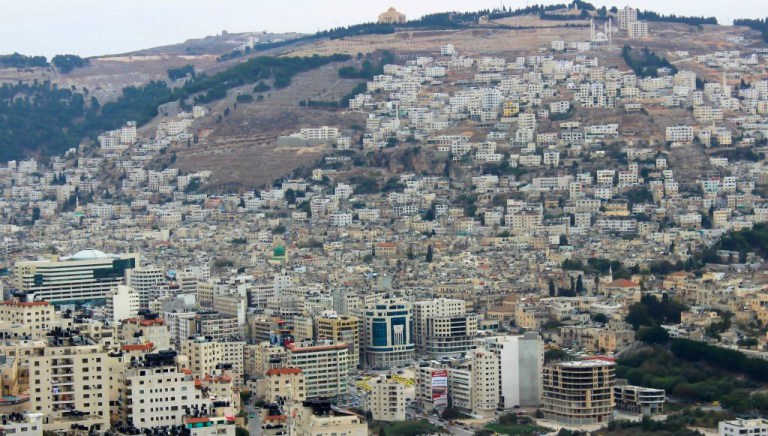
The assassination sparked a flurry of reactions on Nablus Facebook pages; all of them pointed to the severe strife within Fatah as forming the background for the act.
For example, Fawzi Uthman wrote:[4] "A cowardly act, with no justification — and how long, Palestinian Authority, will the illegal weapons remain? We are not ignorant: every gang that has illegal weapons is in cahoots with one of the top officials so that he can use the gang to bolster his status and extend his control, and may God have mercy on the days of the intifada and the rise of the PA in 1993." He was, in other words, lamenting the intifada that led to the PA's establishment—and, indirectly, to Israel's withdrawal...[5]
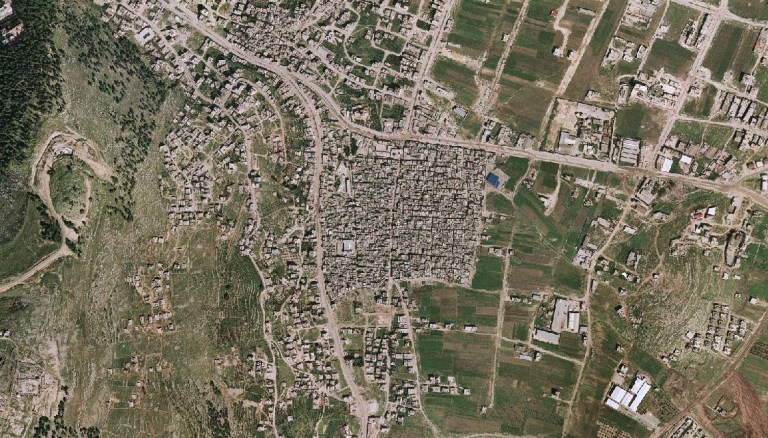
The anarchy stems from the longstanding struggle between the large refugee camps of Balata and Askar, on the one hand and the city of Nablus itself, on the other. Unlike in other West Bank cities, the largest refugee camps are actually located along the main route in Nablus, very close to the casbah, hence strongly affecting the life of the city.
Against the refugee camps stands the undeclared federation of the veteran aristocratic families, with the Masri family at their helm. These families marry between themselves, and the Shak'a family belongs to this alliance. Like the families of Hebron, the Masri confederation, too, has ties with Jordan. Indeed, its economic base is in Jordan and buttresses its existence in Nablus.
Nevertheless, Ghassan Shak'a was personally loyal to PA President Mahmoud Abbas, was a member of the Fatah Central Committee, tried as much as possible to maintain ties with Ramallah, and hoped that the official PA security forces would protect the city from the refugee camps. However, the gunfire directed at his house and the lack of a response from Ramallah, discouraged him and the other Ramallah supporters in Nablus, and they began to speak a different language. For example, General Abd al-Ilah al-Atira, a revered figure in Fatah and one of the heroes of the 1968 Battle of Karameh against the Israeli army, sent Abbas a letter that was posted on the website of the local Nablus television outlet:[7]
Nablus aches and is despondent, and its residents are afraid, and apprehension rules in the street, shooting is a daily occurrence, and they [the gangs] close the streets whenever they want, and burn tires everywhere, and the law is only enforced with God's help, and everyone flees from responsibility — drugs are dangerously widespread, the seats of sovereignty are empty, and political scores are settled in Nablus. Mr. President: your intervention is urgently needed; to the gentlemen in the president's bureau — please, put the letter on the honorable president's table.
Indeed, the tire-burning that was a regular feature of the first Intifada is now a daily reality in Nablus. Here, for example, the Nablus website shows tire-burning in the Rafidiya neighborhood in protest of the municipality's failures.[8]
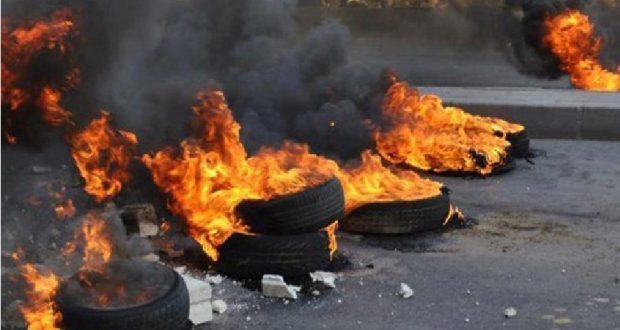
When the PA's response was late in coming, Ghassan Shak'a appeared on local television[9] and said:
Up to now I was one of those who opposed taking the law into one's own hands — that is the task of the PA, but the question is how long can one wait? Every hooligan cannot be allowed to [run wild], and the question is whether it is really the hooligan or someone above him [who sends him] and pays him. If everyone takes the law into his own hands there will be anarchy and the PA will collapse. But that is the responsibility of the official government. When they fired at me they also fired in Jenin and in Tulkarem, and there are even cases of shooting in Ramallah. The official security must take responsibility, but for everyone equally, not just for cronies. If I settle the score [with the shooters] — what does one need a PA for?
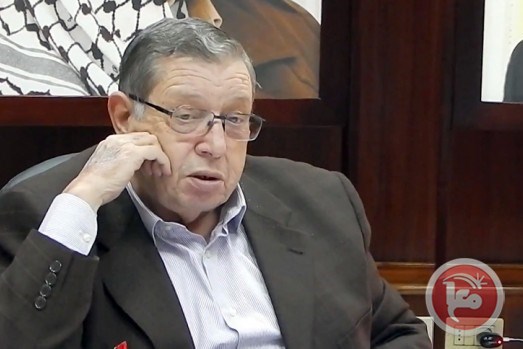
When these words, too, brought no response from Ramallah, Shak'a took a harder line toward the PA. On Saturday, June 4, 2016, he told London-based Rai Al-Youm,[10] which noted that "the man speaks the language of the tribe":
We may have to take our rights into our own hands.... We are not weak, in case anyone thinks we won't take our rights [into our own hands]. They want to drag us into this arena and force every one of the notables to purchase a firearm so that the whole people will know [the language] of lead and fire.... The danger is at its peak when one feels that he is not safe in his own home and that the PA is not strong enough to protect him; then everyone safeguards himself with a weapon and will respond to whoever attacks him, without turning to the courts.... If the inaction [continues], everyone will say — if [the PA] does not go after the one who attacked me — I will go after him.
The Nablus website showed an example of wild gunfire at a wedding and noted that such things happen daily.[11]
When no response came from Ramallah, Shak'a stated that Fatah does not reflect his aspirations anymore and that he will run in the next municipal elections with his own list of candidates against the Fatah slate.[12] He also praised Hamas for their success in restoring law and order in Gaza and criticized the Fatah Central Committee's decisions to boycott Israel and to stop security cooperation with Israel.[13]
Shak'a also said that the Palestinian economy is dependent on Israel and that negotiations are the better path to dealing with Israel.
The announcement of new municipal elections in the West Bank and Gaza triggered another assassination attempt on July 24, 2016. An early morning a fusillade of bullets struck the home of Muhammad Jihad Dwekat just days after he announced his intention to run for Nablus mayor as an independent non-Fatah candidate.[14] Sources in Nablus also explained the second shooting was a message also directed against Shak'a not to run on a list challenging the Fatah list.[15]
An investigation by Rai Al-Youm newspaper carried out in Nablus raised further speculation about the motives behind the shooting. Only a week before it, Shak'a hosted in his house — the same house that was the target of the gunfire — the former Jordanian Prime Minister Abd al-Salam al-Majali, and the subject of their talk was the idea of a confederation between the West Bank and the East Bank. Shak'a had also angered radical Fatah elements by attending the funeral of IDF Brig. Gen. Munir Amar, who had been head of the Israeli civil administration and died in a plane crash.
Whether or not there is a connection, elements in Ramallah can at least suspect that Nablus is following in the footsteps of Hebron by seeking ties with Jordan...and with Israel.
When General Atira spoke of the "empty seats of sovereignty," he was referring to two previous events: Ghassan Shak'a's resignation from the Nablus municipality and the resignation of the governor of Nablus, Akram Rajoub, under pressure from the Al-Aqsa Martyrs Brigades of the refugee camps.
The clashes in Nablus reached a peak on June 6, 1916, when the Aqsa Martyrs killed two high-ranking Palestinian Authority officers[16] in a shootout after the Martyrs attacked the home of another officer, wounding his wife. The dead men had rushed to the aid of the besieged family. It was not the first time the Aqsa Martyrs attacked officers of the PA. [See, for example a flyer threatening an officer.][17]
Who are the Aqsa Martyrs of Nablus? They are militant cells affiliated with Fatah and established in the refugee camps by Yasser Arafat as part of the second intifada.[18] According to sources in Nablus, their main activity now is criminal. Nobody approaches their camp "territory," not even the PA. But the Martyrs have now crossed a boundary and entered the city to extort the merchants for "protection" and to pay for the "national cause." They traffic in narcotics and shoot at will. Nablus residents call them the "takhikha" — the shooters — said the sources in Nablus.
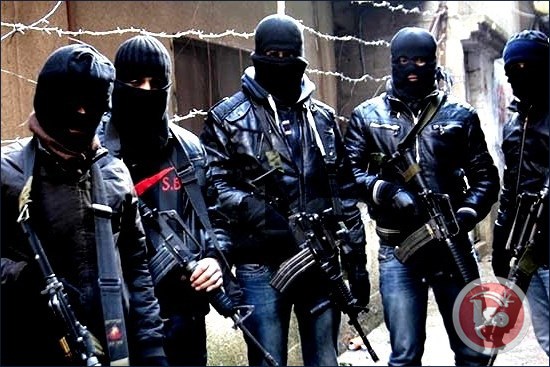
Shak'a was forced to resign in August 2015 following mass demonstrations opposite the municipality over water and electricity stoppages at the apex of the summer heat. The problem was not really solved, and now, as another summer intensifies, it will be interesting to see how the municipality responds to the crisis that is sure to come. The burning tires in the Rafidiya neighborhood could be omens.
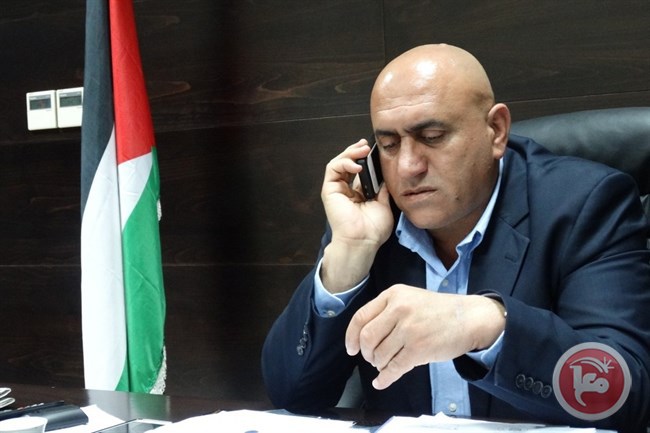
The Akram Rajoub affair is also worth clarifying. In keeping with its policy of appointing governors from one district to serve in another district, the PA appointed senior Fatah official Rajoub, who is from Mount Hebron, as governor of Nablus. This appointment was not to the liking of the Fatah militias in the refugee camps. There were exchanges of fire in Nablus, streets were closed, and intifada phenomena occurred in various parts of the city.[20] The Nablus families, including the head of the municipality, Ghassan Shak'a, supported the governor. But when the anarchic events multiplied and the governor asked Ramallah to intervene, Abbas turned him a cold shoulder. Rajoub then resigned, but Gassan Shak'a went to the PA headquarters at the Muqata'a and explained to Abbas the seriousness of the matter. Rajoub returned to his post, but no action was taken against the gangs so far.
The anarchy in Nablus may spread, senior Fatah official Tawfiq Tirawi warned Abu Mazen.[21] He said in a letter that the anarchy does not endanger the Authority alone, but the fate of the whole Palestinian people.
It was also reported that Hamas is looking now for its chances to recruit armed cells for terror activity inside Israel.
("And in those days there was no king in [Nablus]; everyone did what was right in his own eyes...." Judges 17:6)* * *
Notes
1 http://www.maannews.net/Content.aspx?id=850496
2 http://archive.aawsat.com/details.asp?article=204995&issueno=9130#.V1JyP49OIc9
3 http://www.liveleak.com/view?i=545_1467296194
4 https://www.facebook.com/people/%D9%81%D9%88%D8%B2%D9%8A-%D8%B9%D8%AB%D9%85%D8%A7%D9%86/100010363274509
5 Senior sources in Fatah's Jenin contingent told the author that the prevailing inclination in Jenin is to abolish the PA and form one state with Israel.
6 https://youtu.be/ePJaJLOfpus
7 http://www.nabluslive.net/%D8%A8%D8%B9%D8%AF-%D8%A7%D8%B7%D9%84%D8%A7%D9%82-%D8%A7%D9%84%D9%86%D8%A7%D8%B1-%D8%B9%D9%84%D9%89-%D8%A7%D9%84%D8%B4%D9%83%D8%B9%D8%A9-%D8%A7%D9%84%D9%84%D9%88%D8%A7%D8%A1-%D8%A7%D9%84%D8%A3%D8%AA/
8 http://www.nabluslive.net/%D9%85%D9%88%D8%A7%D8%B7%D9%86%D9%88%D9%86-%D9%8A%D8%B4%D8%B9%D9%84%D9%88%D9%86-%D8%A7%D9%84%D8%A7%D8%B7%D8%A7%D8%B1%D8%A7%D8%AA-%D9%81%D9%8A-%D9%85%D9%86%D8%B7%D9%82%D8%A9-%D8%B1%D9%81%D9%8A%D8%AF/
9 https://www.youtube.com/watch?v=boZiTclG4Ac&feature=youtu.be
10 http://www.raialyoum.com/?p=451366
11 https://www.facebook.com/NablusToday/videos/1112025955487148/
12 http://www.raialyoum.com/?p=463463
13 http://www.nabluslive.net/????-??????-????-????????-?????/#ixzz4DdIaMAZF
14 http://safa.ps/post/186140/%D8%A5%D8%B7%D9%84%D8%A7%D9%82-%D9%86%D8%A7%D8%B1-%D8%B9%D9%84%D9%89-%D9%85%D9%86%D8%B2%D9%84-%D9%85%D8%B1%D8%B4%D8%AD-%D9%84%D8%A8%D9%84%D8%AF%D9%8A%D8%A9-%D9%86%D8%A7%D8%A8%D9%84%D8%B3
15 In private conversation with the author.
16 http://www.wattan.tv/news/179042.html
17 http://www.ajnad-news.com/site/ajnad/details.aspx?itemid=21384
18 https://en.wikipedia.org/wiki/Al-Aqsa_Martyrs%27_Brigades
19 https://maannews.net/Content.aspx?id=773109
20 In an outstanding report from the Jenin refugee camp, Ohad Hamo revealed that the camps' real struggle is being waged against the PA. http://www.mako.co.il/news-world/arab-q3_2015/Article-cdcfa239a17df41004.htm
21 http://www.shfanews.net/index.php/2012-02-15-08-42-31/48378-i
Pinhas Inbari is a veteran Arab affairs correspondent who formerly reported for Israel Radio and Al Hamishmar newspaper, and currently serves as an analyst for the Jerusalem Center for Public Affairs (JCPA). This article appeared August 2, 2016 and is archived at http://jcpa.org/the-fraying-palestinian-political-entity-in-the-west-bank/.